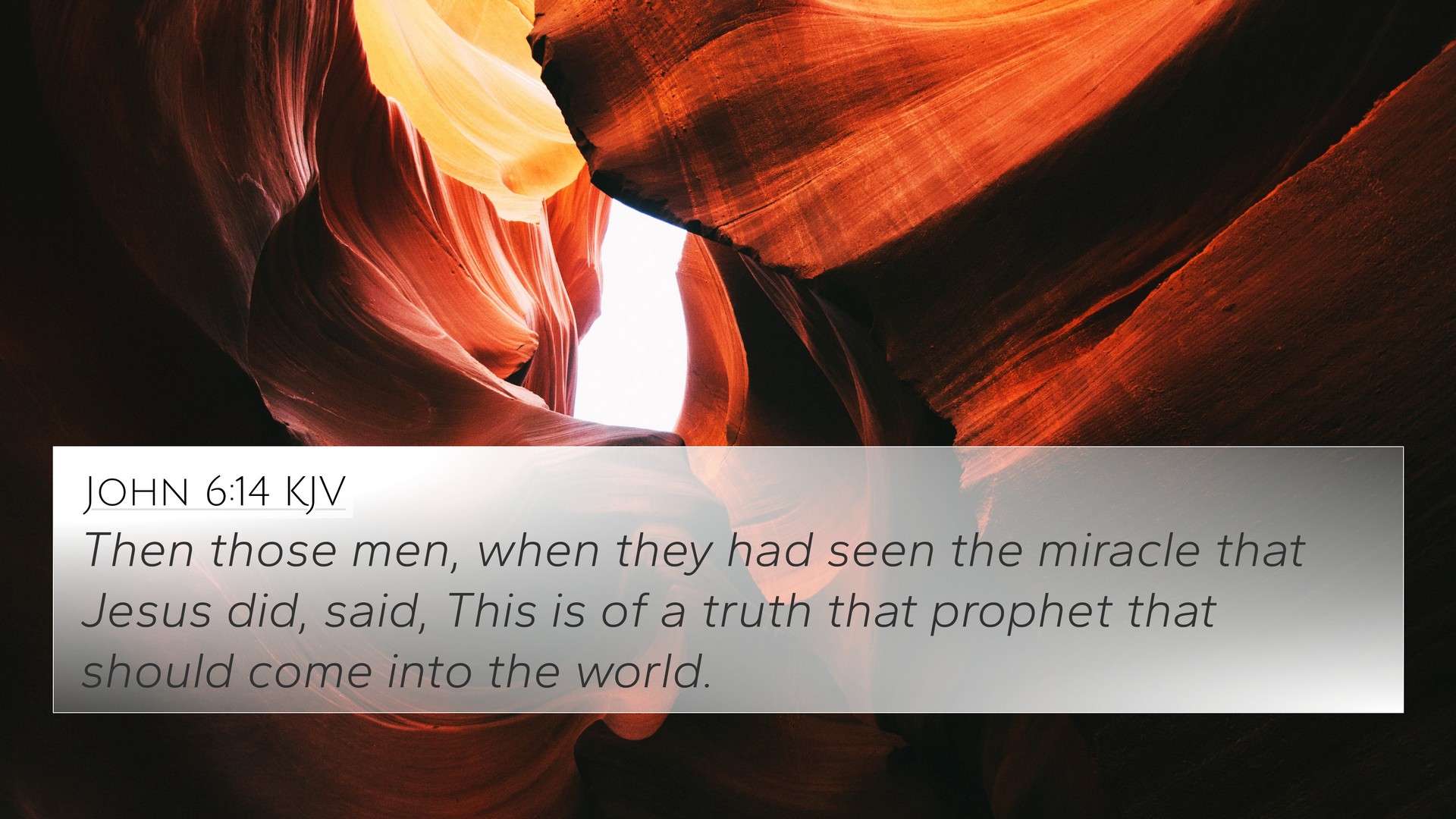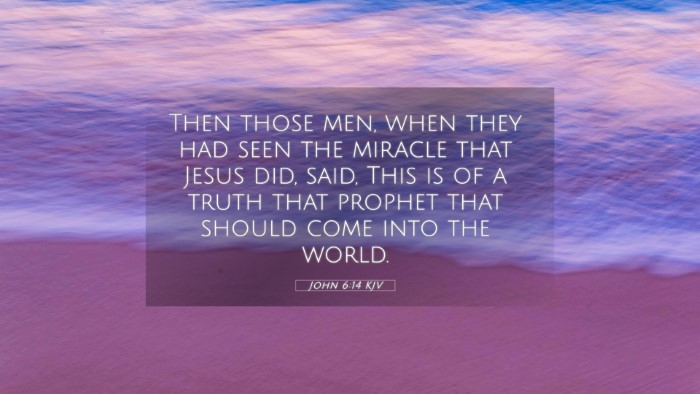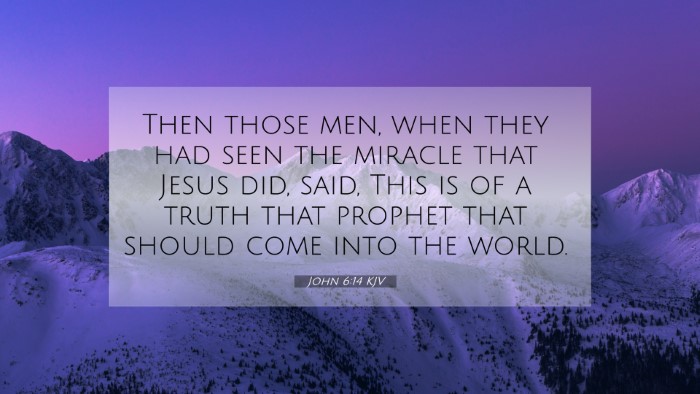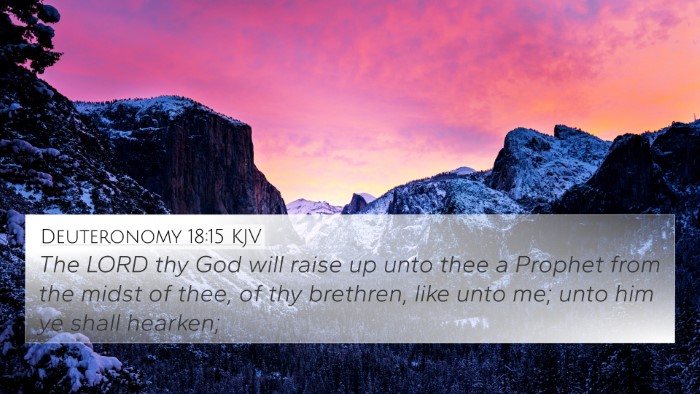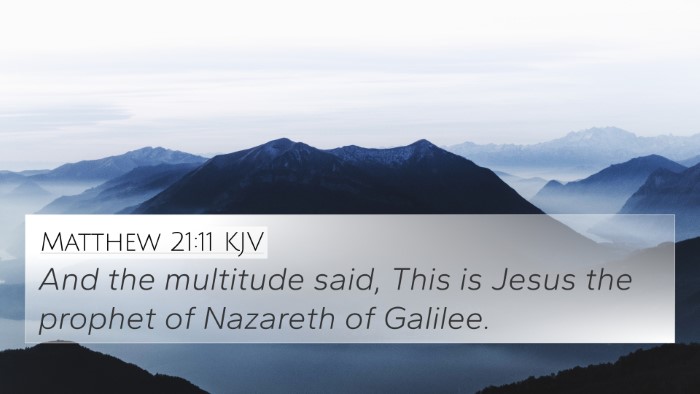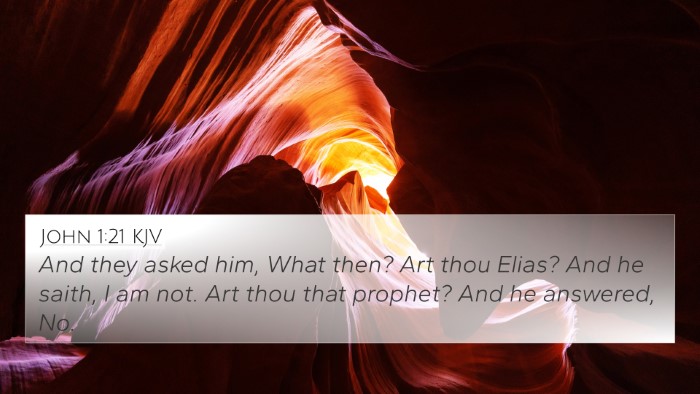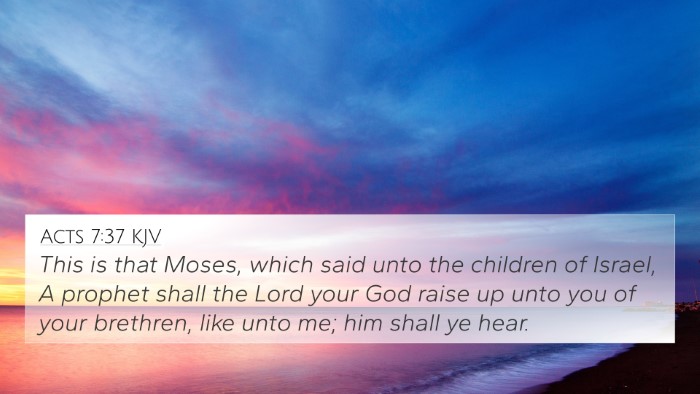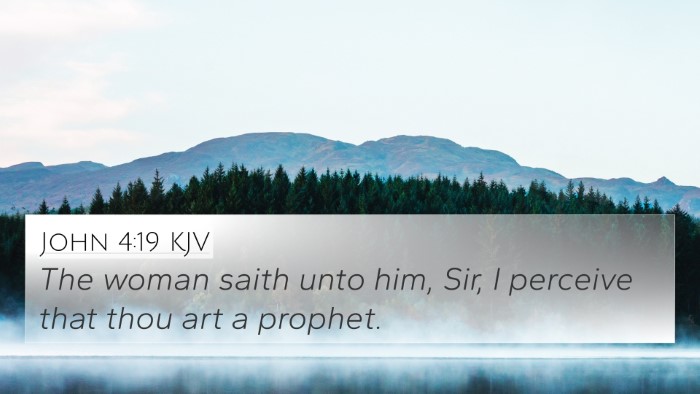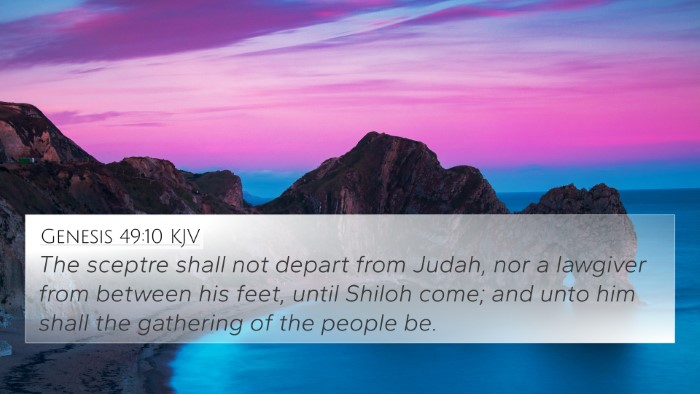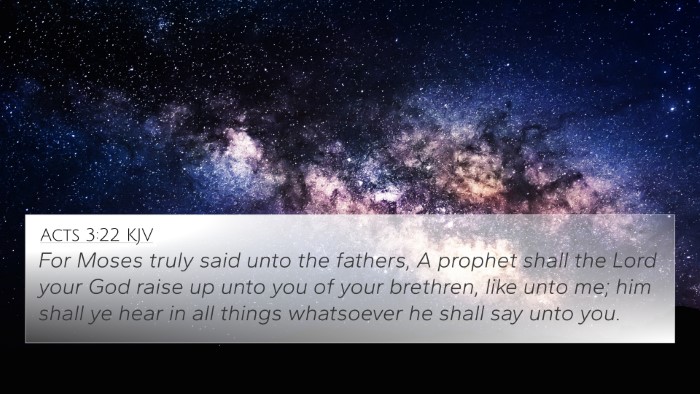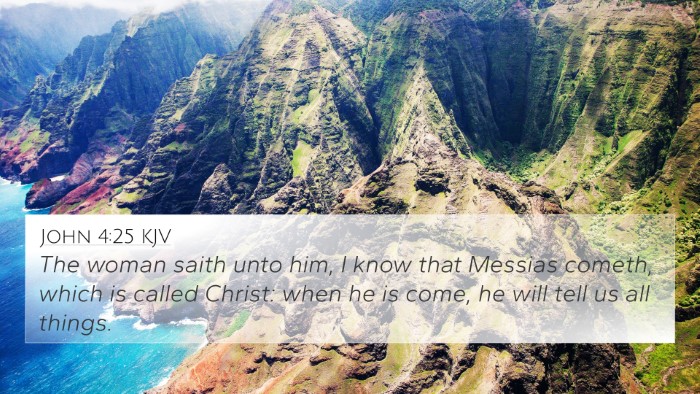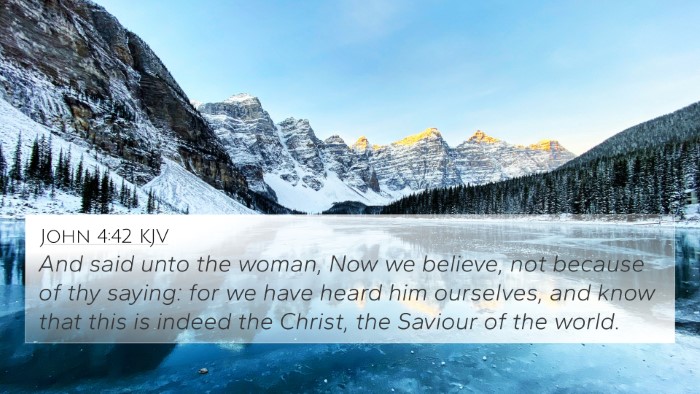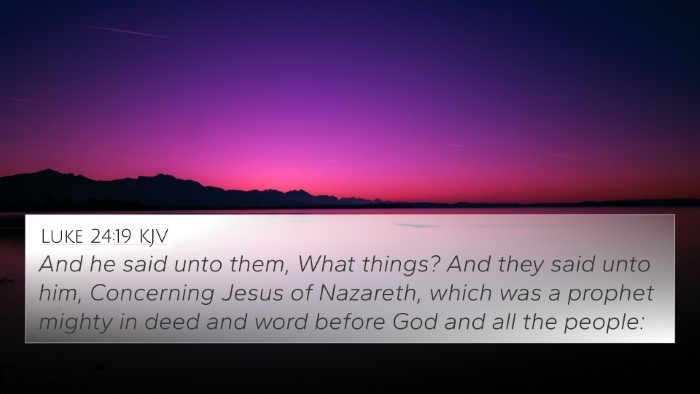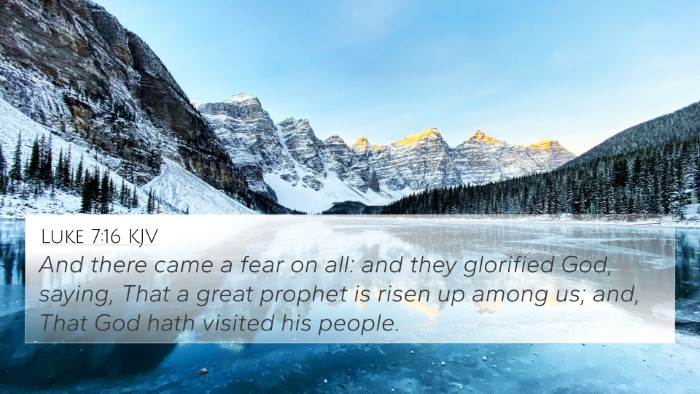Understanding John 6:14
Verse: John 6:14 - "Then those men, when they had seen the miracle that Jesus did, said, This is of a truth that prophet that should come into the world."
Summary of John 6:14
In this passage, the response of the crowd to the miracle performed by Jesus demonstrates their recognition of Him as a prophet. This acknowledgment is significant as it reflects the expectations of the people regarding the Messiah and the prophetic tradition of the Old Testament.
Commentary Insights
Matthew Henry's Commentary
Matthew Henry emphasizes the significance of the miracle as a divine sign pointing to the identity of Jesus. The crowd’s declaration that Jesus is "that prophet" alludes to the prophetic fulfillment anticipated in Deuteronomy 18:15. Henry notes that their perception, although correct in recognizing Jesus as a significant figure, lacks the fullness of understanding His divine nature and mission.
Albert Barnes' Commentary
Albert Barnes elaborates on the impact that miracles had on the perception of Jesus by the people. He points out that the miracles were meant to confirm Jesus’ identity as the Messiah expected in Jewish eschatology. Barnes highlights that while the acknowledgment of Jesus as the prophet is favorable, it also signifies a misunderstanding of His true nature as the Son of God.
Adam Clarke's Commentary
Adam Clarke takes a more historical view, reflecting on the Jewish expectation of prophets during the time of Christ. He comments on the specific expectations surrounding the coming prophet foretold in Moses’ writings. Clarke argues that the people were quick to recognize miraculous power without a deeper comprehension of Jesus' role in redemptive history.
Connections to Other Bible Verses
This verse connects with several other passages that illuminate its meaning and context:
- Deuteronomy 18:15: "The LORD thy God will raise up unto thee a Prophet from the midst of thee, of thy brethren, like unto me; unto him ye shall hearken." This verse serves as the foundation for the crowd's recognition of Jesus as the prophet.
- John 1:21: "And they asked him, What then? Art thou Elias? And he saith, I am not. Art thou that prophet? And he answered, No." This demonstrates that the recognition of a prophetic figure was a common expectation while Jesus was among them.
- Matthew 21:11: "And the multitude said, This is Jesus the prophet of Nazareth of Galilee." This verse shows further acknowledgment of Jesus' prophetic role.
- Acts 3:22: "For Moses truly said unto the fathers, A prophet shall the Lord your God raise up unto you of your brethren, like unto me; him shall ye hear in all things whatsoever he shall say unto you." This reinforces the continuity of the prophetic tradition culminating in Jesus.
- John 6:26: "Jesus answered them and said, Verily, verily, I say unto you, Ye seek me, not because ye saw the miracles, but because ye did eat of the loaves, and were filled." This highlights that their interest in Jesus was also tied to their immediate needs rather than a full understanding of who He was.
- Luke 7:16: "And there came a fear on all: and they glorified God, saying, That a great prophet is risen up among us; and, That God hath visited his people." This shows similar recognition of prophetic identity in Jesus during His ministry.
- Hebrews 1:1-2: "God, who at sundry times and in divers manners spake in time past unto the fathers by the prophets, hath in these last days spoken unto us by his Son..." This transition highlights Jesus as the ultimate prophet exceeding all others.
Inter-Biblical Dialogue
The dialogue between Old Testament prophecies and New Testament fulfillments is critical in understanding John 6:14. The acknowledgment of Jesus as a prophet opens avenues for exploring the continuity of God's revelation through scripture.
Thematic Connections
This verse invites reflection on various themes and concepts within the Bible:
- Miracles and Faith: Jesus performed miracles to confirm His identity and evoke faith among the people.
- Expectation of the Messiah: The crowd's response reflects the Jewish expectation of a coming Messiah who would fulfill prophetic promises.
- Divine Revelation: The acknowledgment on part of the crowd serves to highlight God's method of revealing Himself through Jesus.
Cross-Referencing Techniques
Understanding John 6:14 can be enriched by utilizing various tools for Bible cross-referencing. Some effective methods of studying include:
- Using a Bible concordance to find themes and related verses.
- Employing a cross-reference Bible study to delve deeper into the scriptural connections.
- Practicing how to use Bible cross-references for personal study, enriching the context and grasp of the scripture.
- Consulting Bible reference resources and guides for comparative scripture analysis.
Final Thoughts
In summary, John 6:14 stands as a pivotal moment in the understanding of Jesus' identity as recognized by the people, while also inviting deeper reflection on the implications of His miraculous works. The verse serves as a bridge linking prophetic expectations and the reality of Jesus' ministry, inviting believers to explore the rich tapestry of scripture that connects the Old and New Testaments.
References to Explore Further
The following are additional resources you may consider for further study:
- Tools for comprehensive cross-referencing in Bible study.
- Comparative studies of the Synoptic Gospels regarding the nature of Jesus' prophethood.
- Exploration of the thematic connections between Old Testament prophecies and their New Testament fulfillment.
